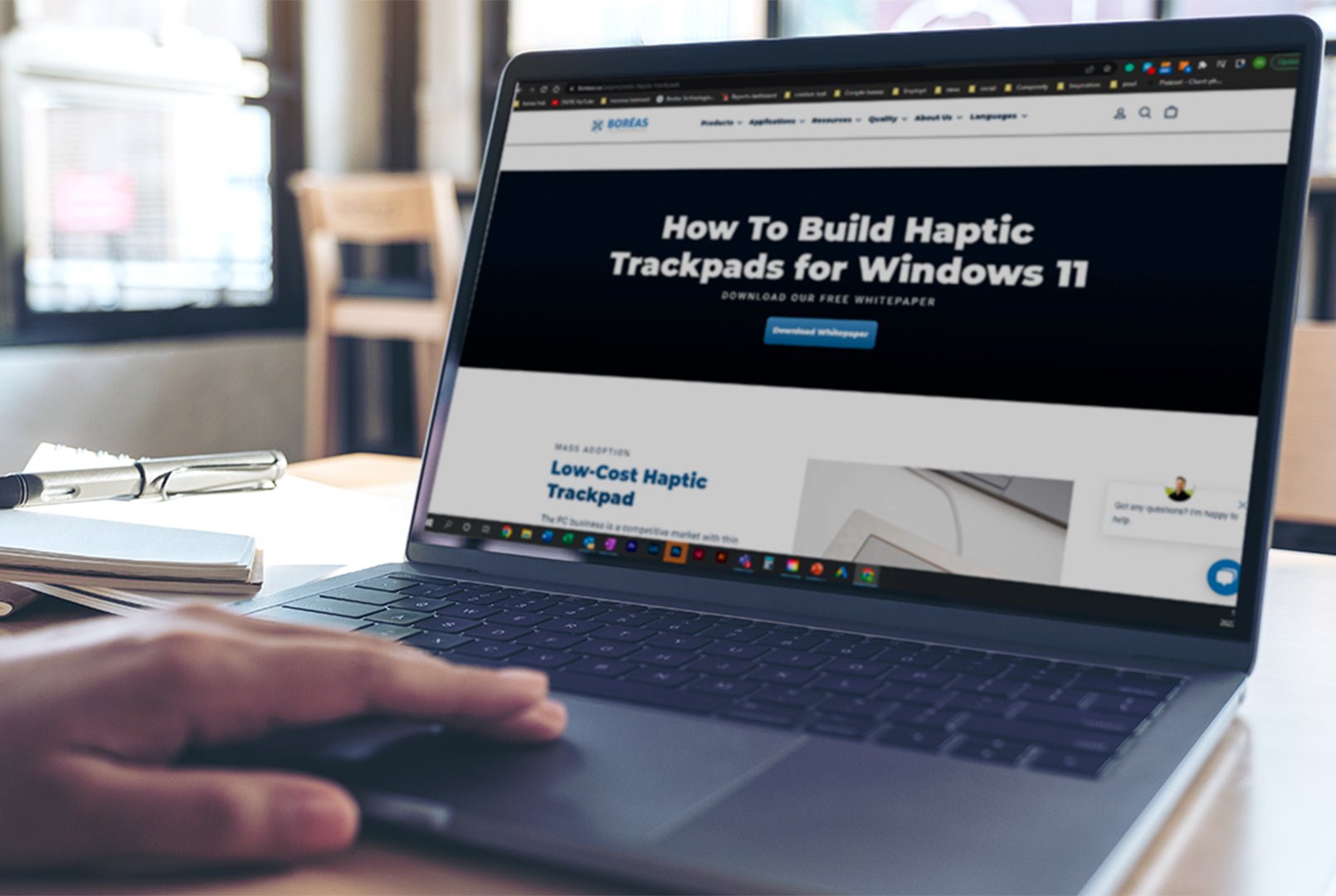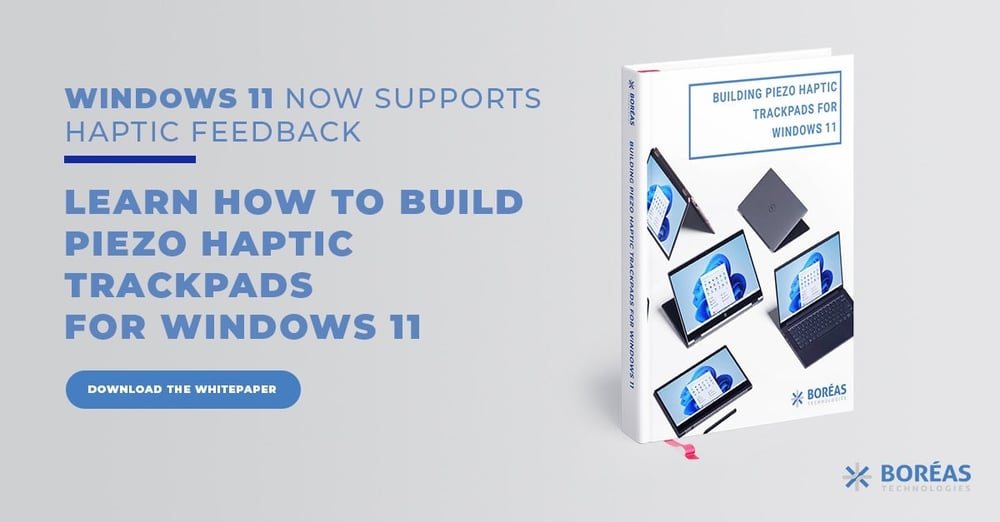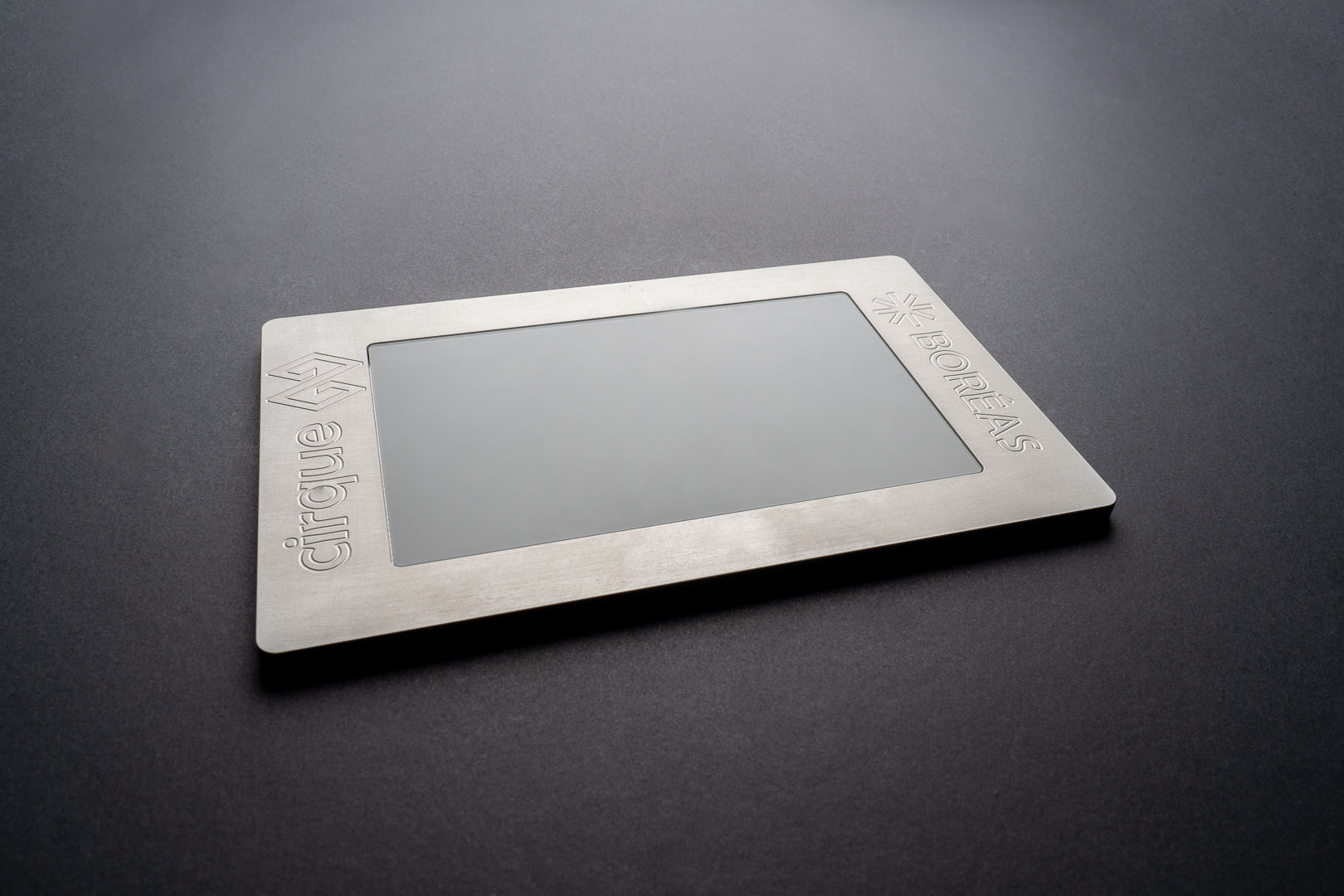
The piezoelectric effect happens when specific elements release electric energy as they undergo mechanical stress. The discovery of piezo elements back in 1880 ushered in revolutionary new theories regarding how to power applications. Now, from scientific equipment to consumer electronics, piezoelectricity powers items you use daily, whether you know it or not.
The computer market recently uncovered piezo actuators' usefulness in trackpad designs. As a result, manufacturers of all sizes continue to rush to adopt precision haptic touchpads and incorporate them in their new laptop models.
Why Piezo Technology and Trackpads Are a Perfect Match

Some predicted the dawn of haptic technology to be nothing more than a tech trend. However, as major computer manufacturers continue tweaking current trackpad designs to incorporate haptics, it's become clear that they are here to stay.
Prior to haptics, most laptop manufacturers used what's known as capacitive trackpads, which detect touch by forming an electrostatic field on the surface. Before that, they were mechanical trackpads. Then haptics came onto the scene.
Apple began incorporating haptics in their laptop trackpads in 2015. Now Windows and Lenovo are following suit, as they've announced the introduction of haptic trackpads in 2021. However, not all haptic trackpads use piezo technology, which is considered top-of-the-line.
The piezo haptic trackpad has a simple design with three thin layers: glass, touch printed circuit board assembly (PCBA), and piezo haptic touch. These layers fasten onto a bracket or on the cover. When a user presses the trackpad, it senses the force and signals the pad to click. Overall, haptic trackpads eliminate many issues endemic to other trackpad models, and piezo technology builds on haptics' qualities.
What makes a piezoelectric trackpad so desirable? There's no single answer to explain the advantages of piezo trackpads, but it can be summed up by the design's simplicity and enhanced user experience.
1. Piezo Components Enable a Thinner Design for Trackpads
Regarding mechanical design, larger trackpads reach a thickness of around 4 mm. On the other hand, haptic trackpads range from 3 mm to 2.4 mm. Pads with piezo actuator types provide the ultimate slim design. Speaking about this in millimeters might make the difference appear insignificant, but the reality is astounding.
Reducing the width of any part is always a desirable quality for computer manufacturers. Piezo touchpads help save up to 2 mm compared to many current trackpad designs. In addition, the razor-thin design allows computer manufacturers to use the extra space to increase things like battery size.

2. Unique Force Sensing Capabilities Resulting in a More Accurate Trackpad
Haptic trackpads with a piezo driver open up new possibilities by adding the option to feel the amount of force applied to the trackpad. This feature could open up different kinds of interaction with the trackpad. UX designers now have more tools to enhance the user experience.
3. Increases Usable Trackpad Surface
With both mechanical and capacitive trackpads, users often run into "dead spots" — when they attempt clicks, nothing happens. Piezo-powered haptic trackpads virtually eliminate this issue. The improved sensor of a haptic trackpad lets users click anywhere on the module surface and registers a command.
4. Piezo Haptic Feedback Allows for a Customizable Touch Experience
Users have complete control over their preferences when they install a touchpad with piezo haptic feedback. They also have personalized settings options. In this software, users may adjust things like the haptic intensity and force sensing levels.
5. Consumes Less Power Than Traditional Trackpads
One of the main advantages of piezoelectric-powered devices is that the elements generate their power through mechanical force. These elements significantly impact battery usage and increase customer satisfaction. Trackpads with a piezo driver consume an estimated 10x less energy than other haptic technologies.
Invest in a State-of-the-Art Piezo Haptic Trackpad Solution

It's plain to see that switching from a mechanical to a haptic trackpad provides many user benefits. However, it's important to remember that there's a wide range of options, and not every haptic trackpad is created equally.
Many approaches to haptic trackpads are poorly designed and don't take advantage of everything the technology offers. Additionally, many haptic trackpad designs, like Apple's, don't incorporate piezo technology, which is the best haptic technology on the market.
Especially if you own a high-end computer, it's crucial to invest in a precision haptic touchpad to match its quality. Boreas Technologies provides a vast selection of the market's sleekest haptic trackpad technologies. This includes the thinnest trackpads and user-friendly software, allowing users to easily adjust haptic strength and force sensing.
Check out Boreas Technologies' product page for more details regarding our revolutionary patent on piezo haptic touchpads.


Leave a comment